Search Result
Results for "
3 T3-L1
" in MedChemExpress (MCE) Product Catalog:
| Cat. No. |
Product Name |
Target |
Research Areas |
Chemical Structure |
-
- HY-114911
-
|
DA2370; Prenazone; Zepelin
|
COX
Reactive Oxygen Species
MMP
|
Inflammation/Immunology
|
|
Feprazone (DA2370; Prenazone), an analogue of Phenylbutazone (HY-B0230), is a nonsteroidal anti-inflammatory agent with analgesic and antipyretic activities. Feprazone acts by inhibiting the activity of cyclooxygenase (COX)-2. Feprazone ameliorates free fatty acid (FFA)-induced oxidative stress by reducing the production of mitochondrial reactive oxygen species (ROS). Feprazone can decrease the expression of MMP-2 and MMP-9. Besides, Feprazone can suppress adipogenesis and increase lipolysis in differentiating 3 T3-L1 cells. Feprazone also can be used to research atherosclerosis and obesity .
|
-
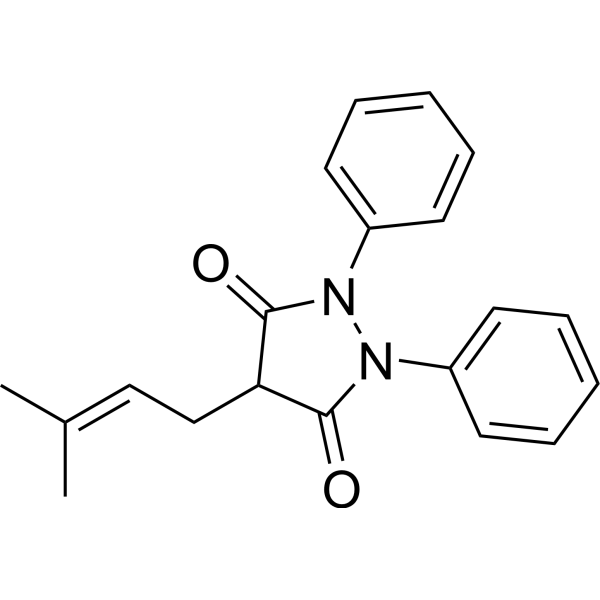
-
- HY-125961
-
|
|
Others
|
Cancer
|
|
T3Inh-1 is a potent and selective inhibitor of ppGalNAc-T3 (IC50=7 µM). T3Inh-1 reduces FGF23 hormone levels in both tissue cells and mice, without causing any toxic side effects. T3Inh-1 also prevents breast cancer cells. The enzyme ppGalNAc-T3 is implicated in at least two medically important pathways: cancer metastasis and stabilization of FGF23 (regulates phosphate levels in the bloodstream) .
|
-
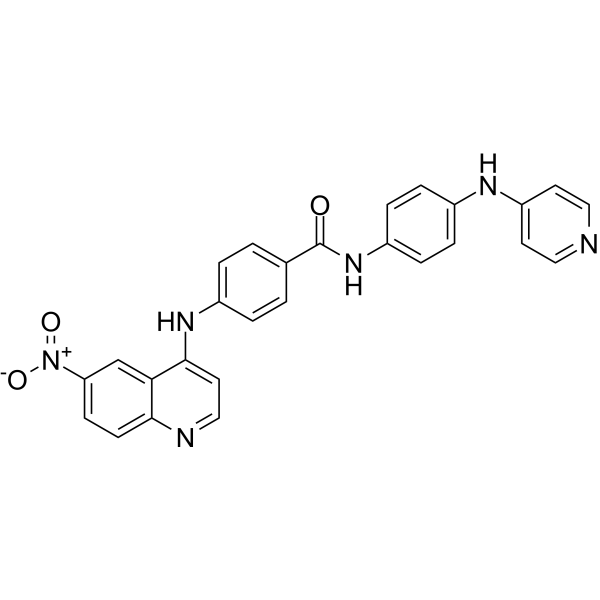
-
- HY-W014282
-
|
|
Biochemical Assay Reagents
|
Others
|
|
4-Cumylphenol is a polycarbonate chain terminator. 4-Cumylphenol is widely used as a material for polycarbonate plastics, surfactants, fungicides and preservatives. 4-Cumylphenol also induces lipid accumulation in mouse adipocytes .
|
-
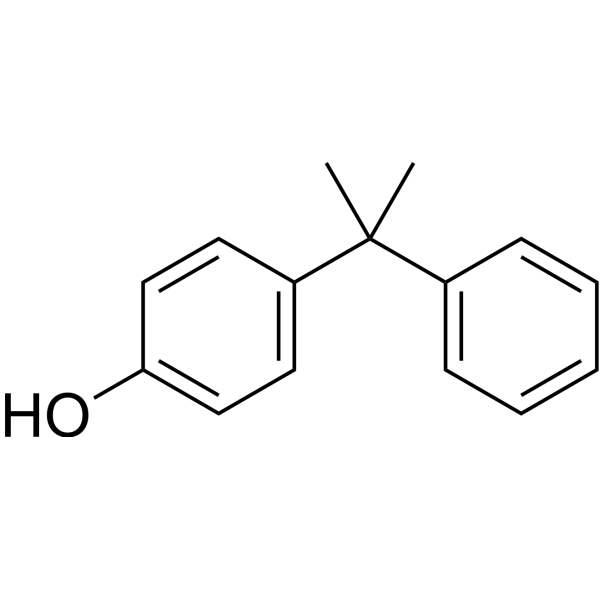
-
- HY-156093
-
|
|
Tryptophan Hydroxylase
|
Metabolic Disease
|
|
TPH1-IN-1 (compound 40) is a xanthine derivative and an inhibitor of tryptophan hydroxylase TPH1 (IC50: 110.1 nM). TPH1-IN-1 has good in vitro activity and liver microsome stability, and effectively inhibits adipocyte differentiation of T3-L1 cells .
|
-
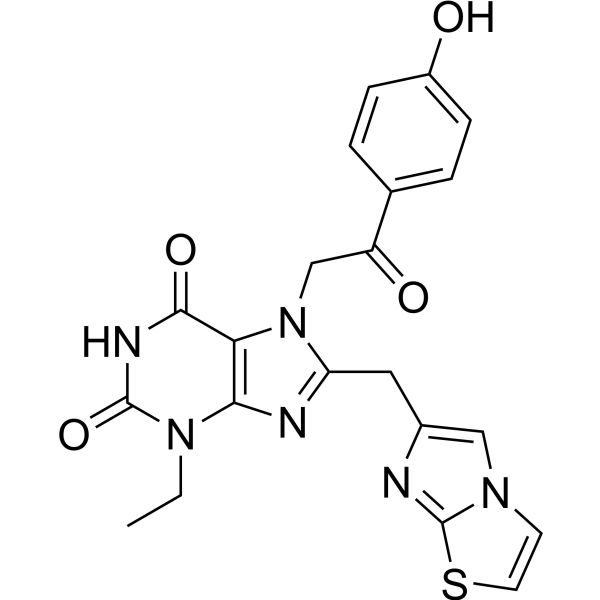
-
- HY-N1185
-
|
|
|
|
|
Tagitinin A is a sesquiterpene with anti-hyperglycemic activity. Tagitinin A significantly inhibits glucose uptake in differentiated 3T3-L1 adipocytes .
|
-
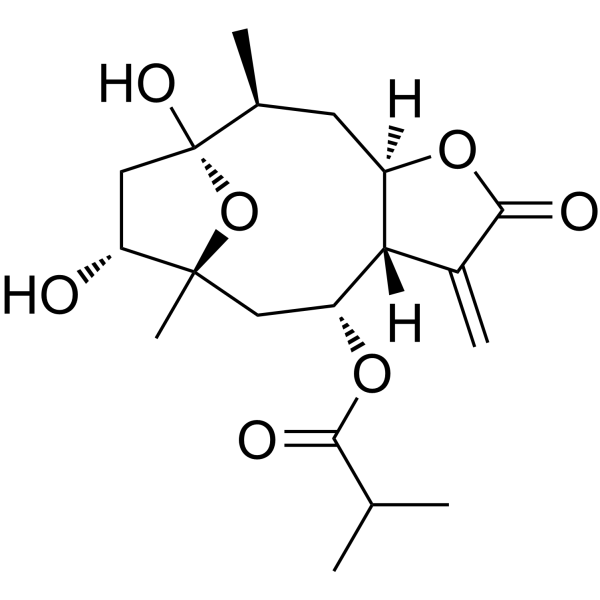
-
- HY-N12120
-
|
|
Others
|
Metabolic Disease
|
|
Retrofractamide A is an amide constituent that can be isolated from the fruit of Piper chaba. Retrofractamide A promotes adipogenesis in 3T3-L1 cells .
|
-
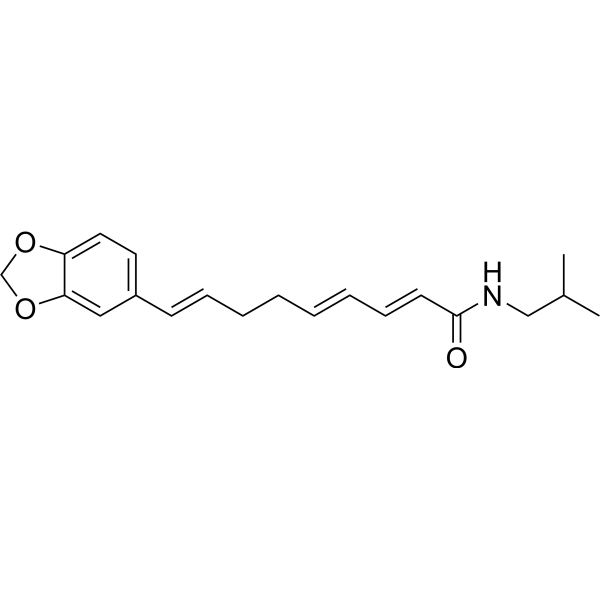
-
- HY-N11038
-
|
|
Others
|
Others
|
|
Drynachromoside A is a chromone glycoside. Drynachromoside A has biochemical effects on the osteoblastic (MC3T3-E1 cells) proliferation activities .
|
-
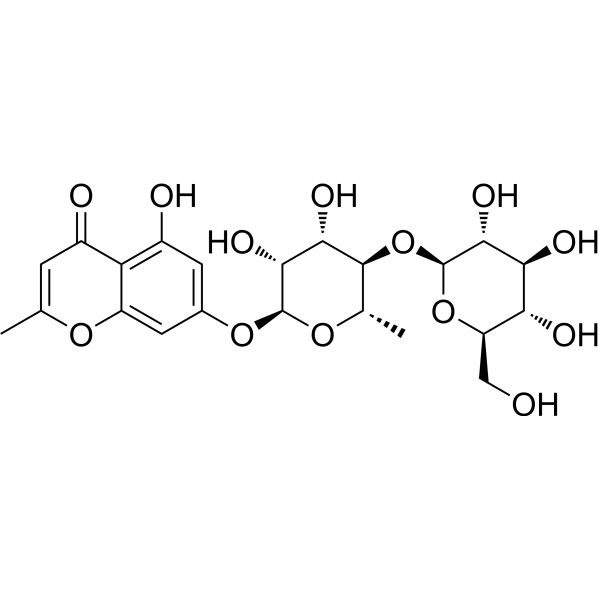
-
- HY-113204
-
-

-
- HY-N3026
-
|
|
PPAR
|
Metabolic Disease
|
|
Soyasaponin Ab is a soyasaponin that exerts an anti-obesity effect in 3T3-L1 adipocytes through downregulation of peroxisome proliferator-activated receptor γ (PPARγ) .
|
-
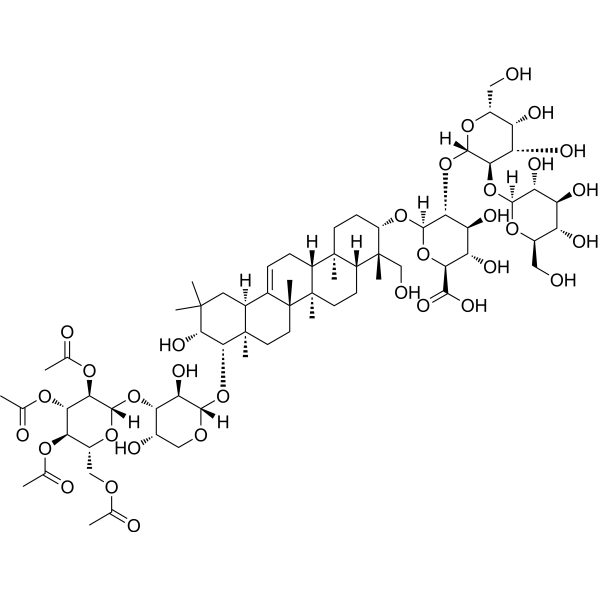
-
- HY-N3027
-
|
|
PPAR
|
Metabolic Disease
|
|
Soyasaponin Aa is a soyasaponin that exerts an anti-obesity effect in 3T3-L1 adipocytes through downregulation of peroxisome proliferator-activated receptor γ (PPARγ) .
|
-
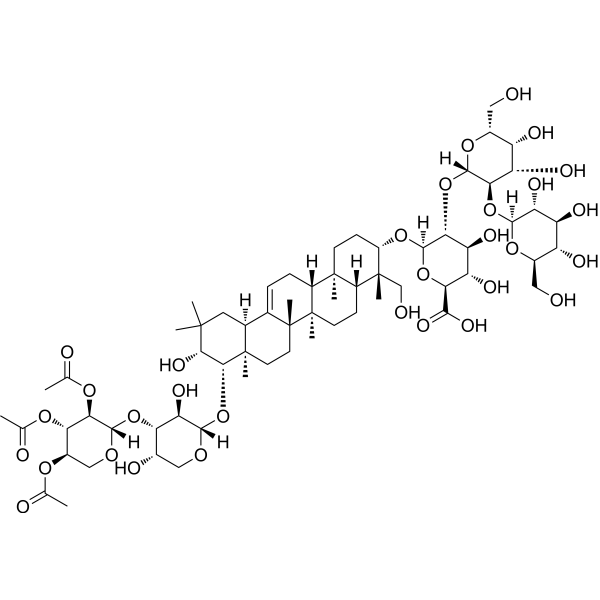
-
- HY-N2961
-
|
|
Others
|
Others
|
|
Broussonin B is a phenolic compound isolated from the stem barks of Broussonetia kanzinoki (Moraceae). Broussonin B inhibits adipocyte differentiation in 3T3-L1 cells .
|
-

-
- HY-N4119
-
|
|
Cholinesterase (ChE)
|
Neurological Disease
|
|
Neoeriocitrin, isolated from Drynaria Rhizome, shows activity on proliferation and osteogenic differentiation in MC3T3-E1. Neoeriocitrin is a potent acetylcholinesterase (AChE) inhibitor .
|
-
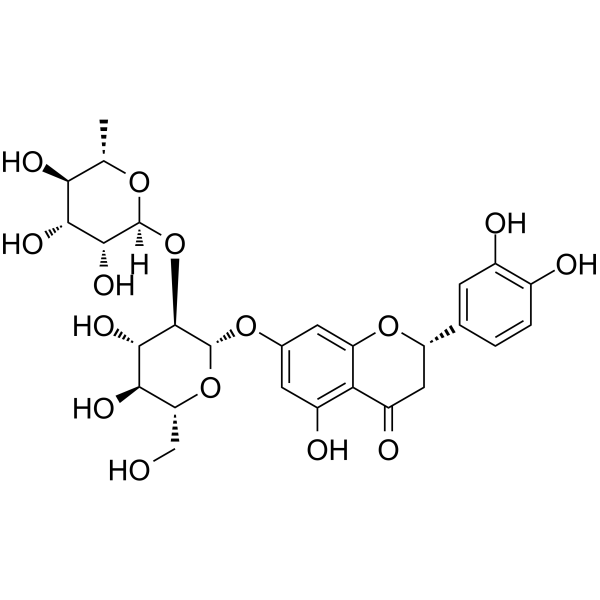
-
- HY-N4253
-
|
|
Others
|
Metabolic Disease
|
|
Kudinoside D is a main natural component of triterpenoid saponin derived from Ilex kudingcha. Kudinoside D suppresses adipogenesis through modulation of the AMPK pathway in 3T3-L1 adipocytes .
|
-
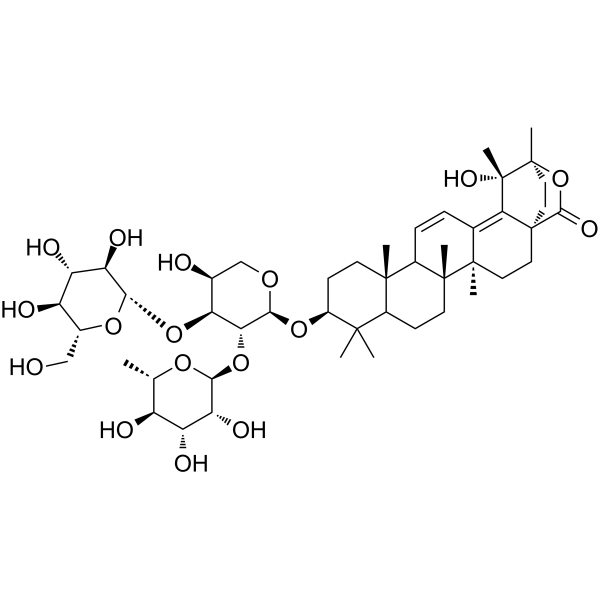
-
- HY-122959
-
|
|
Akt
PPAR
|
Metabolic Disease
|
|
Kihadanin B is a citrus limonoid that can be purified from the peels of immature Citrus unshiu. Kihadanin B suppresses adipogenesis through repression of the Akt-FOXO1-PPARγ axis in 3T3-L1 adipocytes .
|
-
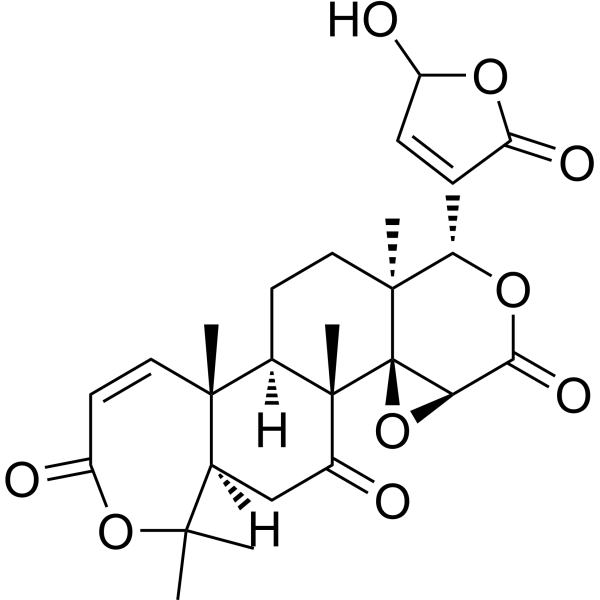
-
- HY-N0404
-
|
|
p38 MAPK
AMPK
|
Metabolic Disease
Inflammation/Immunology
|
|
Sinigrin is a major glucosinolate present in plants of the Brassicaceae family. Sinigrin inhibits early-stage adipogenesis of 3T3-L1 adipocytes through the AMPK and MAPK signaling pathways. Sinigrin has potent anti-oxidant, anti-tumor and anti-inflammatory effects .
|
-
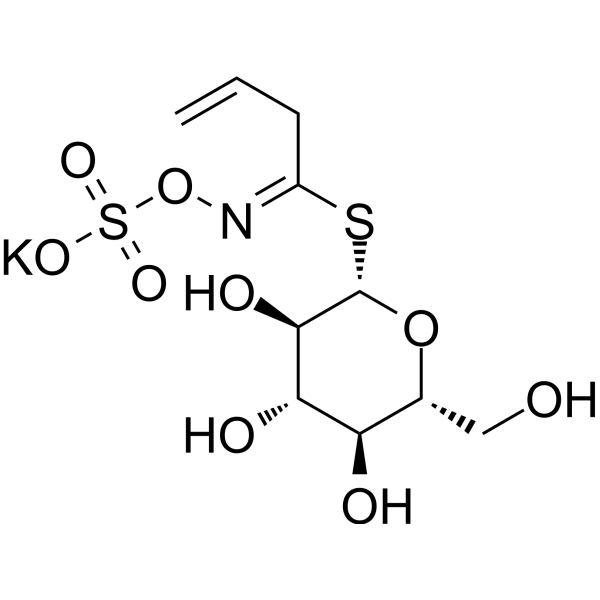
-
- HY-N7690
-
|
|
Others
|
Metabolic Disease
|
|
3,5,7,3′,4′-Pentamethoxyflavone is a polymethoxyflavonoid that can be extracted from Kaempferia parviflora. 3,5,7,3′,4′-Pentamethoxyflavone can induce adipogenesis on 3T3-L1 preadipocytes by regulating transcription factors at an early stage of differentiation .
|
-
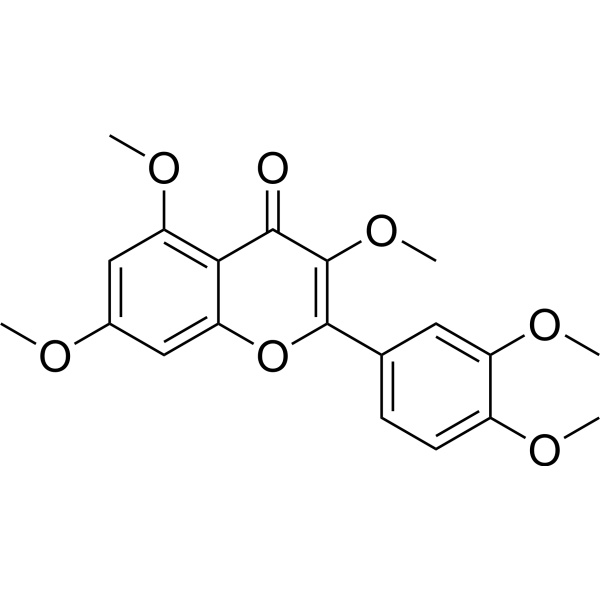
-
- HY-155363
-
|
|
AMPK
|
Metabolic Disease
|
|
AMPK activator 13 is a potent activator of AMPK. AMPK activator 13 inhibits mitotic clonal expansion of 3T3-L1 cells by activating AMPK pathway and enhances cell mitochondrial oxygen consumption rate. AMPK activator 13 can be used in study obesity .
|
-
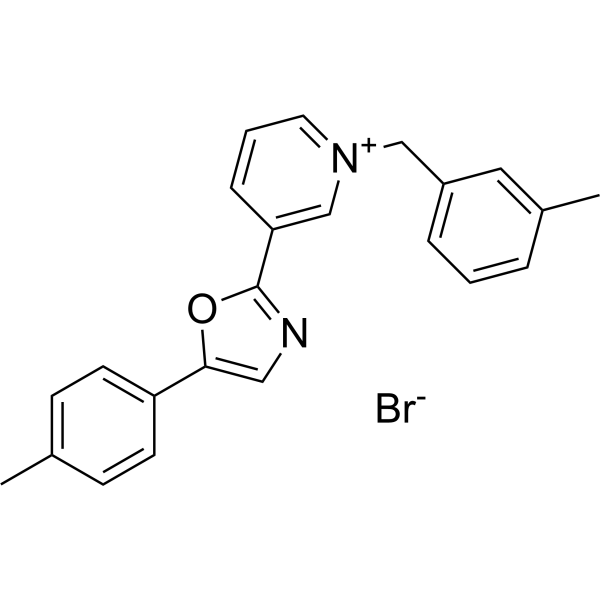
-
- HY-N3775
-
|
|
Others
|
Metabolic Disease
|
|
Dodoviscin I is an adipogenesis agent that increases triglyceride content in 3T3L1 mouse fibroblasts .
|
-
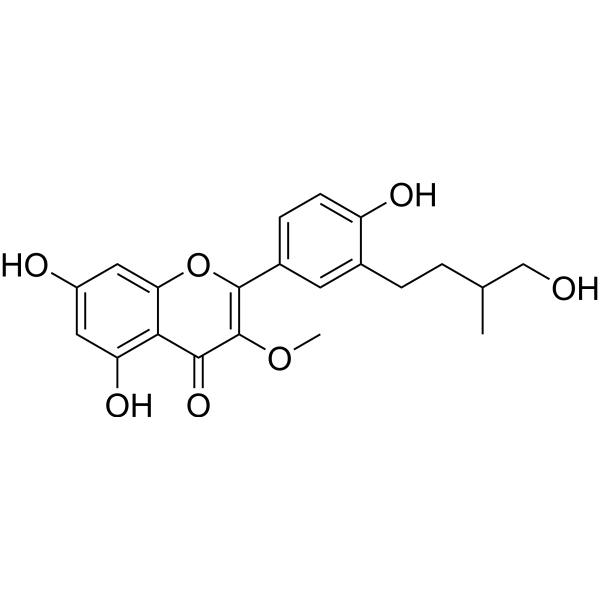
-
- HY-133556
-
|
|
AMPK
|
Metabolic Disease
|
|
IQZ23 inhibits adipocyte differentiation via AMPK pathway activation. IQZ23 exerts a high efficacy in decreasing the triglyceride level (EC50=0.033 μM) in 3T3-L1 adipocytes. IQZ23 could be used for the research of obesity and related metabolic disorders .
|
-
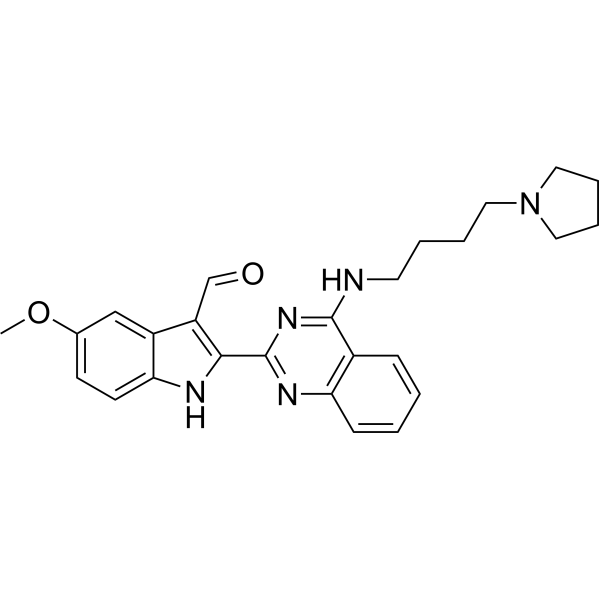
-
- HY-149875
-
|
|
Bacterial
|
Infection
|
|
T3SS-IN-1 (compound B9) is a potent inhibitor of type III secretion system (T3SS) inhibitor. T3SS-IN-1 can also inhibits hpa1 promoter activity and harpin protein expression without affecting bacterial growth .
|
-
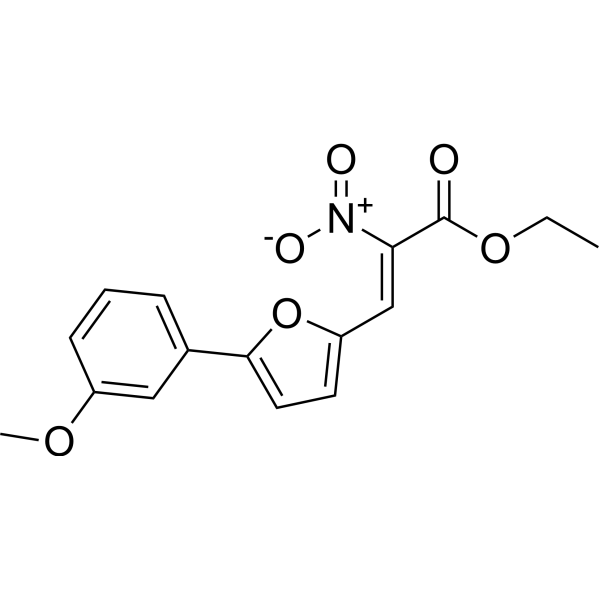
-
- HY-N7661
-
|
|
PPAR
|
Metabolic Disease
|
|
4β-Hydroxywithanolide E, isolated from Physalis peruviana L., inhibits adipocyte differentiation of 3T3-L1 cells through modulation of mitotic clonal expansion. 4β-Hydroxywithanolide E is an adipogenesis inhibitor and inhibits PPARγ, C/EBPα, and the adipocyte-specific molecule aP2 mRNA expression .
|
-

-
- HY-23199
-
|
|
Acyltransferase
|
Metabolic Disease
|
|
H2-003 is a selective human DGAT2 inhibitor that inhibits triglyceride (TG) biosynthesis. H2-003 also effectively inhibits lipid droplet formation in 3T3-L1 cells. H2-003 can be used for research on DGAT2 and TG-related metabolic diseases .
|
-
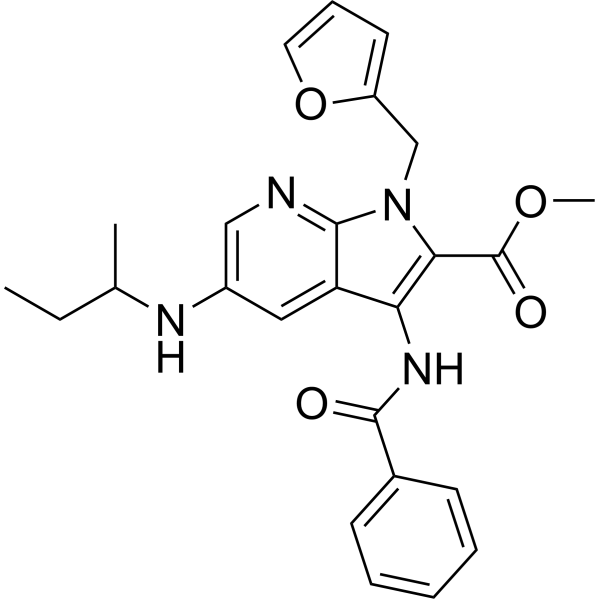
-
- HY-12557
-
|
|
CaSR
Wnt
TNF Receptor
|
Inflammation/Immunology
|
|
γ-Glutamylvaline is an activator of CaSR with anti-inflammatory activity. γ-Glutamylvaline inhibits TNF-α-induced proinflammatory cytokine production and increases Wnt5a expression. γ-Glutamylvaline activates calcium-sensing receptor pathways in adipocytes of 3T3-L1 mice and prevents low-grade chronic inflammation .
|
-
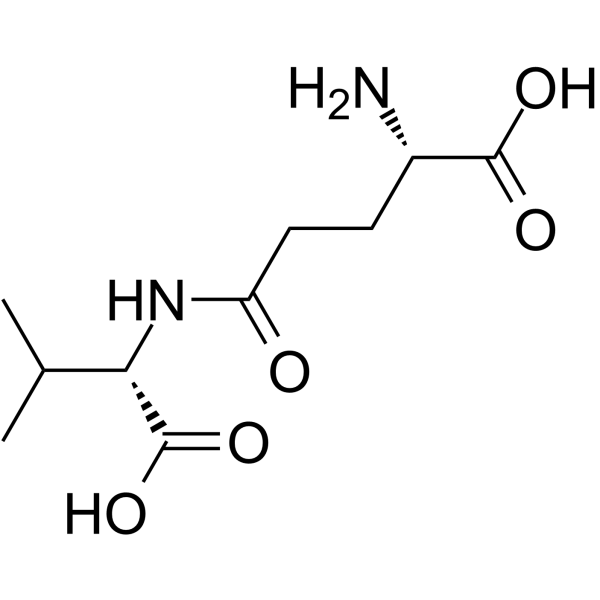
-
- HY-N6583
-
|
|
Bacterial
|
Infection
|
|
Licoflavonol, a minor flavone from the roots of Glycyrrhiza uralensis, is an inhibitor of the Salmonella type III secretion system (T3SS) .
|
-
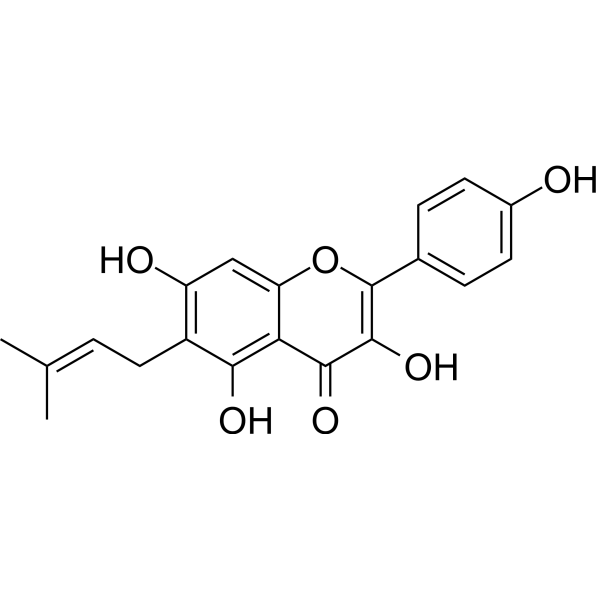
-
- HY-N7907
-
|
|
Others
|
Metabolic Disease
|
|
Myricetin-3-O-β-D-xylopyranosyl-(1→2)-β-D-glucopyranoside is a natural product that can be obtained from sphaerophysa salsula. Myricetin-3-O-β-D-xylopyranosyl-(1→2)-β-D-glucopyranoside inhibits triglyceride (TG) accumulation in 3T3-L1 adipocytes .
|
-

-
- HY-156010
-
|
|
PPAR
|
Metabolic Disease
|
|
PPARγ-IN-2 (Compound 5a) is a PPARγ inhibitor. PPARγ-IN-2 inhibits TG accumulation in 3T3-L1 preadipocytes (EC50: 0.106 μM). PPARγ-IN-2 inhibits high-cholesterol diet (HFC)-induced obesity and related metabolic syndrome, and reduces lipid accumulation in adipose tissue .
|
-
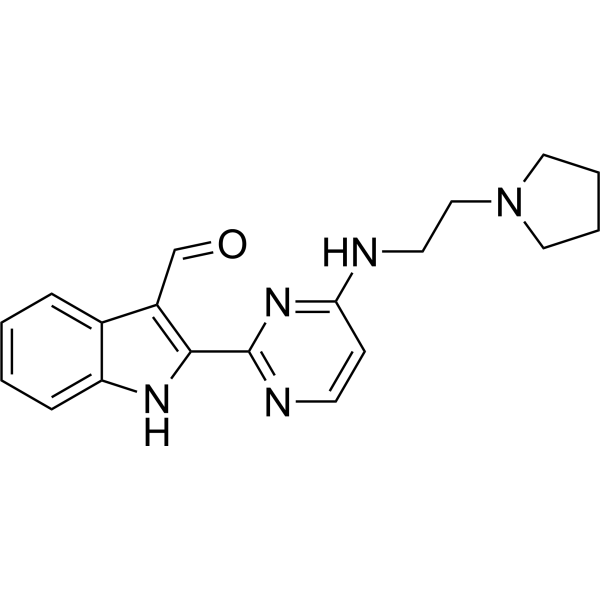
-
- HY-135982
-
|
|
GPR109A
|
Metabolic Disease
|
|
GPR81 agonist 1 is a potent and highly selective GPR81 agonist, with EC50s of 58 nM and 50 nM for human and mouse GPR81, respectively. GPR81 agonist 1 inhibits lipolysis in differentiated 3T3-L1 adipocytes. GPR81 agonist 1 suppresses lipolysis in mice without cutaneous flushing. GPR81 agonist 1 displays remarkable selectivity for GPR81 over GPR109a .
|
-
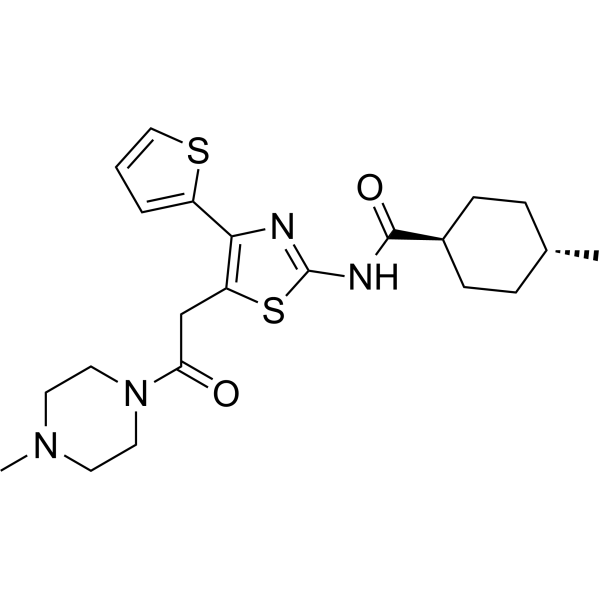
-
- HY-145446
-
|
|
Epigenetic Reader Domain
|
Metabolic Disease
|
|
SGC-SMARCA-BRDVIII is a potent and selective inhibitor of SMARCA2/4 and PB1(5), with Kds of 35 nM, 36 nM, and 13 nM, respectively. SGC-SMARCA-BRDVIII also inhibits PB1(2) and PB1(3), with Kds of 3.7 and 2.0 μM, respectively. SGC-SMARCA-BRDVIII can block adipogenesis of 3T3-L1 murine fibroblasts .
|
-
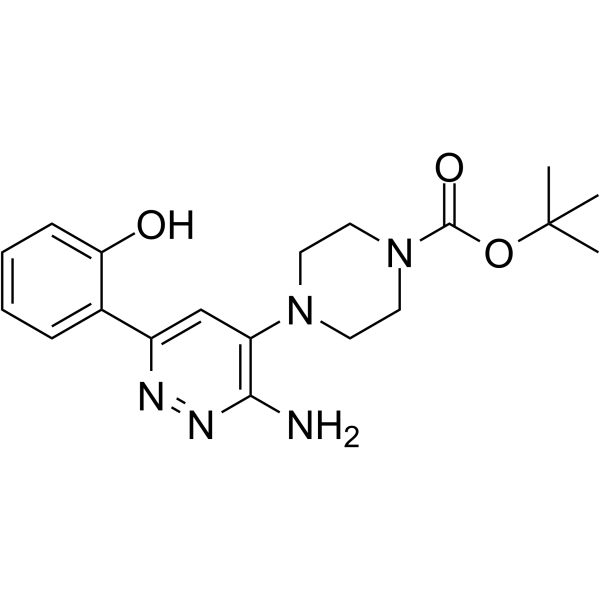
-
- HY-146398
-
|
|
AMPK
|
Metabolic Disease
|
|
AMPK activator 6 (Compound GC) reduces lipid content and activates the AMPK pathway in HepG2 and 3T3-L1 cells. AMPK activator 6 significantly suppresses the increase in triglyceride (TG) , total cholesterol (TC), low-density lipoprotein-C (LDL-C), and other biochemical indices in blood serum. AMPK activator 6 can be used for the research of non-alcoholic fatty liver disease (NAFLD) and metabolic syndrome .
|
-

-
- HY-N0930B
-
|
|
AMPK
Bacterial
|
Infection
Metabolic Disease
|
|
Galegine hydrochloride, a guanidine derivative, contributes to weight loss in mice. Guanidine hydrochloride is the compound derived from G. officinalis, which gave rise to the biguanides, metformin and phenformin. Galegine hydrochloride activates AMPK in 3T3-L1 adipocytes and L6 myotubes, as well as in the H4IIE rat hepatoma and HEK293 human kidney cell lines. Galegine hydrochloride has antibacterial activity, with minimum inhibitory concentration of 4 mg/L against Staphylococcus aureus strains .
|
-
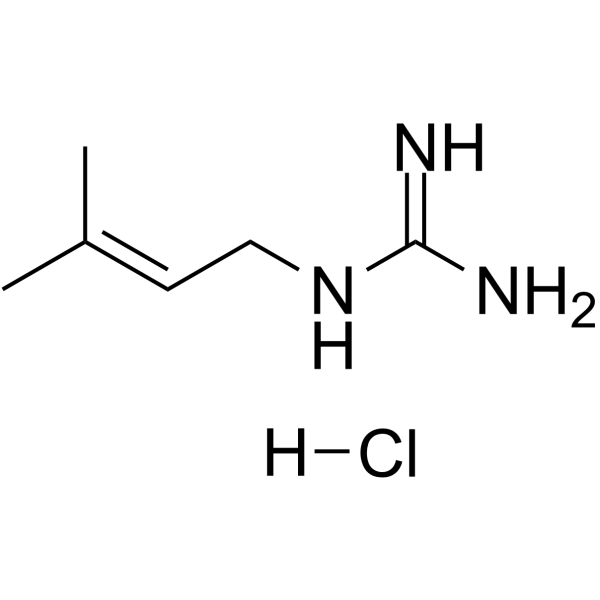
-
- HY-N0457
-
|
Cichoric acid; Dicaffeoyltartaric acid
|
Reactive Oxygen Species
Apoptosis
|
Metabolic Disease
Inflammation/Immunology
|
|
Chicoric acid (Cichoric acid), an orally active dicaffeyltartaric acid, induces reactive oxygen species (ROS) generation. Chicoric acid inhibits cell viability and induces mitochondria-dependent apoptosis in 3T3-L1 preadipocytes through ROS-mediated PI3K/Akt and MAPK signaling pathways. Chicoric acid increases glucose uptake, improves insulin resistance, and attenuates glucosamine-induced inflammation. Chicoric acid has antidiabetic properties and antioxidant, anti-inflammatory effects .
|
-

-
- HY-N0704
-
|
|
Sirtuin
PPAR
Fatty Acid Synthase (FASN)
c-Myc
Bacterial
|
Infection
Metabolic Disease
Cancer
|
|
Agrimol B, a polyphenol, is an orally active and potent SIRT1 activator. Agrimol B shows anti-adipogenic and anticancer activity. Agrimol B shows antibacterial activity against plant pathogens. Agrimol B dramatically inhibits 3T3-L1 adipocyte differentiation by reducing PPARγ, C/EBPα, FAS, UCP-1, and apoE expression. The action of Agrimol B on the cancer cells is likely derived from its effect on c-MYC, SKP2 and p27 .
|
-

-
- HY-108931
-
|
|
EGFR
|
Cancer
|
|
AG 1406 (compound M19) is a HER2 inhibitor, with an IC50 of 10.57 μM for HER2 in BT474 cell and >50 μM for EGFR in EGF-3T3 cell .
|
-
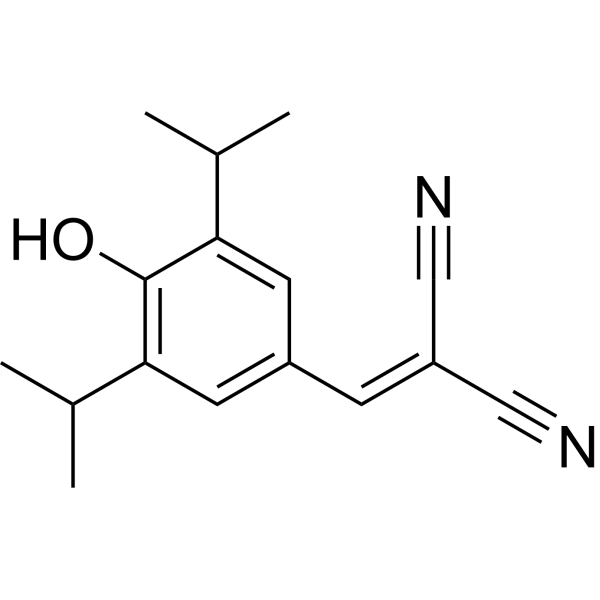
-
- HY-N0123
-
Aloin
Maximum Cited Publications
7 Publications Verification
Aloin-A; Barbaloin-A
|
Others
|
Cancer
|
|
Aloin (Aloin-A; Barbaloin-A) is a natural anti-tumor anthraquinone glycoside with iron chelating activity. Aloin induces the differentiation of MC3T3-E1 cells into osteoblasts through MAPK-mediated Wnt and Bmp signaling pathways. Alkaline phosphatase (ALP) is an early marker of osteoblast differentiation, and the activity of ALP is also enhanced by Aloin. Aloin also reduces brain edema, reduces blood-brain barrier disruption and improves cortical impact injuries. Aloin is used in research into osteoporosis and traumatic brain injury (TBI) .
|
-

-
- HY-N11507
-
|
TKV
|
PPAR
|
Metabolic Disease
|
|
Tibesaikosaponin V (TKV) is a triterpene diglycoside, which can be isolated from the methanol extract of the roots of Bupleurum chinense DC.. Tibesaikosaponin V inhibits lipid accumulation and triacylglycerol content occurred without cytotoxicity to adipocytes. Tibesaikosaponin V suppresses the mRNA expression of nuclear transcription factors, such as peroxisome proliferator-activated receptor γ (PPARγ) and CCAAT/enhancer binding protein α (C/EBPα). Tibesaikosaponin V inhibits 3T3-L1 preadipocyte differentiation. Tibesaikosaponin V can be used fro research of obesity and its associated metabolic disorders .
|
-
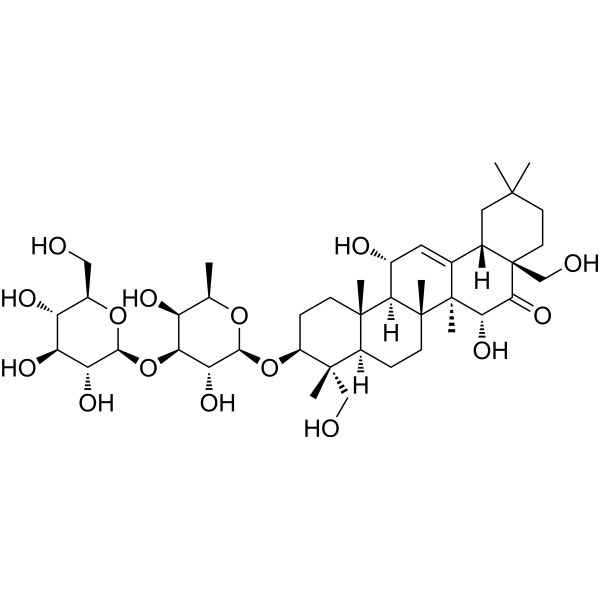
-
- HY-120358
-
-

-
- HY-N6858
-
|
4-Hydroxy-L-isoleucine
|
Others
|
Metabolic Disease
|
|
4-Hydroxyisoleucine is an orally active amino acid that can be isolated from fenugreek seeds. 4-Hydroxyisoleucine displays insulinotropic and antidiabetic properties .
|
-
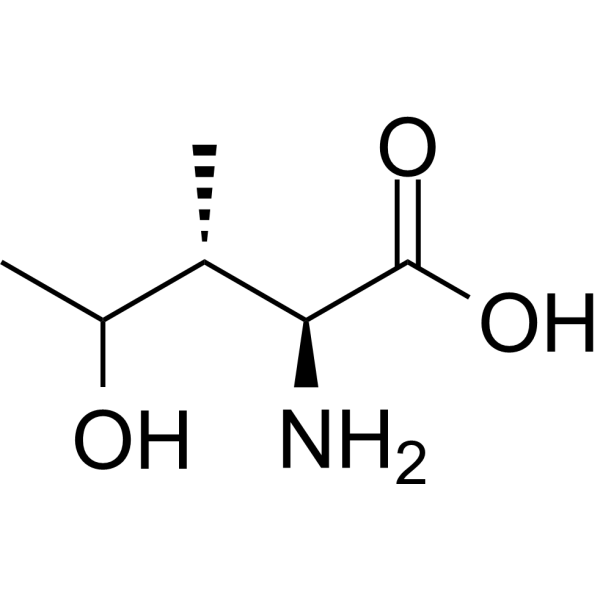
-
- HY-12316
-
|
20α-Hydroxycholesterol
|
Smo
Endogenous Metabolite
|
Cancer
|
|
20(S)-hydroxyCholesterol (20α-Hydroxycholesterol) is an allosteric activator of the oncoprotein smoothened (Smo) that activates the hedgehog (Hh) signaling pathway with an EC50 of 3 μM in a gene transcription reporter assay using NIH3T3 cells .
|
-

-
- HY-N0226
-
|
|
Cholinesterase (ChE)
Beta-secretase
|
Neurological Disease
Metabolic Disease
|
|
Epiberberine is an alkaloid isolated from Coptis chinensis, acts as a potent AChE and BChE inhibitor, and a non-competitive BACE1 inhibitor, with IC50s of 1.07, 6.03 and 8.55 μM, respectively. Epiberberine has antioxidant activity, with peroxynitrite ONOO - scavenging effect (IC50, 16.83 μM), and can be used for the research of Alzheimer disease . Epiberberine inhibits the early stage of differentiation of 3T3-L1 preadipocytes, downregulates the Raf/MEK1/2/ERK1/2 and AMPKα/Akt pathways . Epiberberinecan be used for the research of diabetic disease .
|
-
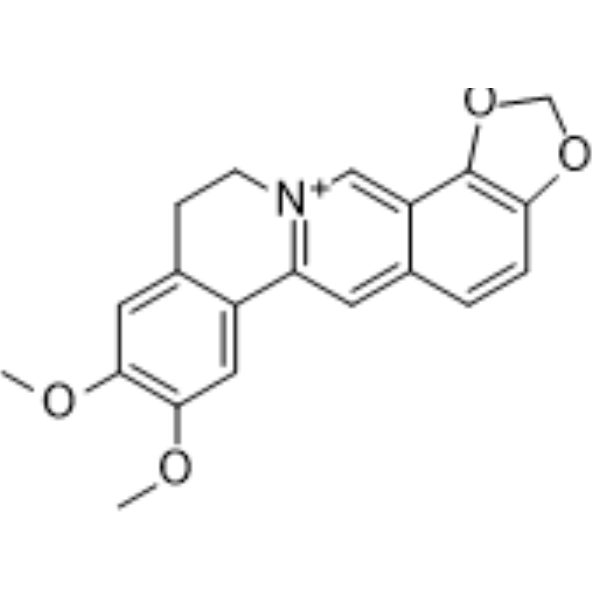
-
- HY-N0226A
-
|
|
Cholinesterase (ChE)
Beta-secretase
Reactive Oxygen Species
|
Neurological Disease
Metabolic Disease
|
|
Epiberberine chloride is an alkaloid isolated from Coptis chinensis, acts as a potent AChE and BChE inhibitor, and a non-competitive BACE1 inhibitor, with IC50s of 1.07, 6.03 and 8.55 μM, respectively. Epiberberine chloride has antioxidant activity, with peroxynitrite ONOO - scavenging effect (IC50, 16.83 μM), and may protect against Alzheimer disease . Epiberberine chloride inhibits the early stage of differentiation of 3T3-L1 preadipocytes, downregulates the Raf/MEK1/2/ERK1/2 and AMPKα/Akt pathways . Epiberberine has the potential effect in the research of diabetic disease .
|
-
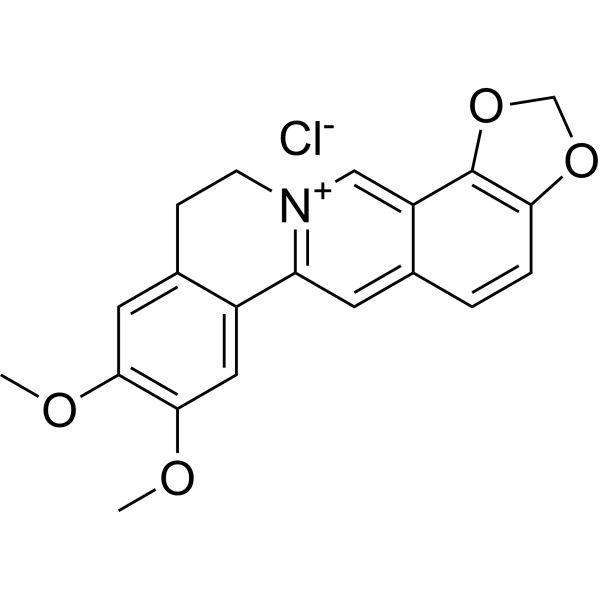
-
- HY-N5072
-
|
4',6,7-Trihydroxyisoflavone
|
CDK
PI3K
PKC
|
Cancer
|
|
Desmethylglycitein (4',6,7-Trihydroxyisoflavone), a metabolite of daidzein, sourced from Glycine max with antioxidant, and anti-cancer activities.
Desmethylglycitein binds directly to CDK1 and CDK2 in vivo, resulting in the suppresses CDK1 and CDK2 activity . Desmethylglycitein is a direct inhibitor of protein kinase C (PKC)α, against solar UV (sUV)-induced matrix matrix metalloproteinase 1 (MMP1) . Desmethylglycitein binds to PI3K in an ATP competitive manner in the cytosol, where it inhibits the activity of PI3K and downstream signaling cascades, leading to the suppression of adipogenesis in 3T3-L1 preadipocytes .
|
-
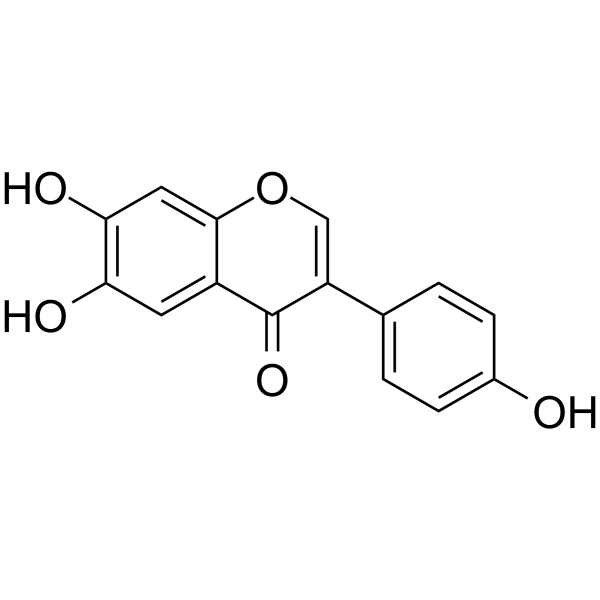
-
- HY-12316R
-
|
20α-Hydroxycholesterol (Standard)
|
Smo
Endogenous Metabolite
|
Cancer
|
|
20(S)-Hydroxycholesterol (Standard) is the analytical standard of 20(S)-Hydroxycholesterol. This product is intended for research and analytical applications. 20(S)-hydroxyCholesterol (20α-Hydroxycholesterol) is an allosteric activator of the oncoprotein smoothened (Smo) that activates the hedgehog (Hh) signaling pathway with an EC50 of 3 μM in a gene transcription reporter assay using NIH3T3 cells .
|
-

-
- HY-161247
-
|
|
5-HT Receptor
|
Metabolic Disease
|
|
5HT2A antagonist 2 is an orally active, selective antagonist for 5HT2A with IC50 of 14 nM. 5-HT2A antagonist 2 exhibits good chemical, hepatocyte, and plasma stability, without significant cytotoxicity in cell lines VERO, HFL-1, L929, NIH3T3, CHO-K1 .
|
-

-
- HY-146561
-
|
|
Glucocorticoid Receptor
NF-κB
|
Inflammation/Immunology
|
|
S-HP210 is a potent and selective glucocorticoid receptor (GR) with an IC50 value of 1.92 μM for NF-κB transrepression (TR). S-HP210 represses the LPS-induced transcription of a variety of proinflammatory genes such as IL-1β, IL-6 and COX-2. S-HP210 is nontoxic at effective doses against mouse fibroblasts 3T3 cells .
|
-
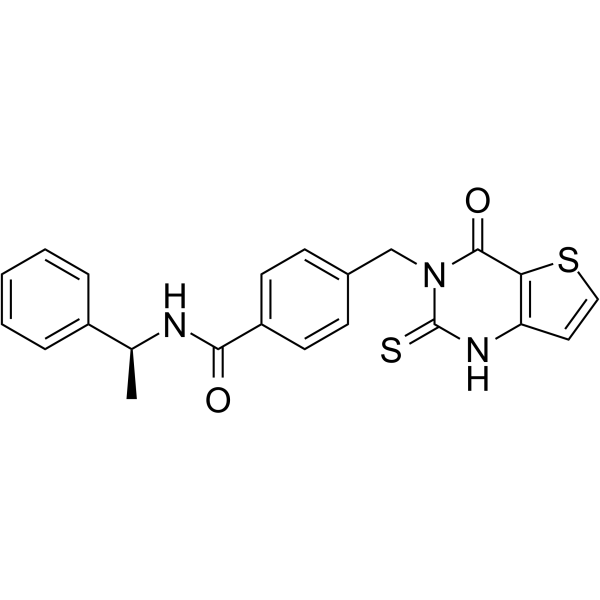
| Cat. No. |
Product Name |
Target |
Research Area |
-
- HY-12557
-
|
|
CaSR
Wnt
TNF Receptor
|
Inflammation/Immunology
|
|
γ-Glutamylvaline is an activator of CaSR with anti-inflammatory activity. γ-Glutamylvaline inhibits TNF-α-induced proinflammatory cytokine production and increases Wnt5a expression. γ-Glutamylvaline activates calcium-sensing receptor pathways in adipocytes of 3T3-L1 mice and prevents low-grade chronic inflammation .
|
-
- HY-125357
-
|
|
Peptides
|
Metabolic Disease
|
|
Ternatin (compound 2) is a cyclic heptapeptides that can be isolated from mushroom Coliorus versicolor. Ternatin inhibits fat-accumulation with an IC50 of 0.027 μM in 3T3-L1 adipocytes .
|
| Cat. No. |
Product Name |
Category |
Target |
Chemical Structure |
-
- HY-113204
-
-

-
- HY-N3026
-
-

-
- HY-N12120
-
-

-
- HY-N11038
-
-

-
- HY-N3027
-
-

-
- HY-N2961
-
-

-
- HY-N4119
-
-

-
- HY-N4253
-
-

-
- HY-122959
-
-

-
- HY-N0404
-
-

-
- HY-N7690
-
-

-
- HY-N3775
-
-

-
- HY-N7661
-
|
|
Source classification
Plants
Solanaceae
Steroids
|
PPAR
|
|
4β-Hydroxywithanolide E, isolated from Physalis peruviana L., inhibits adipocyte differentiation of 3T3-L1 cells through modulation of mitotic clonal expansion. 4β-Hydroxywithanolide E is an adipogenesis inhibitor and inhibits PPARγ, C/EBPα, and the adipocyte-specific molecule aP2 mRNA expression .
|
-

-
- HY-N6583
-
-

-
- HY-N7907
-
|
|
Leguminosae
Phenols
Polyphenols
Plants
Sphaerophysa salsula
|
Others
|
|
Myricetin-3-O-β-D-xylopyranosyl-(1→2)-β-D-glucopyranoside is a natural product that can be obtained from sphaerophysa salsula. Myricetin-3-O-β-D-xylopyranosyl-(1→2)-β-D-glucopyranoside inhibits triglyceride (TG) accumulation in 3T3-L1 adipocytes .
|
-

-
- HY-N0930B
-
-

-
- HY-N0457
-
-

-
- HY-N0704
-
-

-
- HY-N0123
-
-

-
- HY-N11507
-
|
TKV
|
Triterpenes
Structural Classification
Terpenoids
Source classification
Plants
Umbelliferae
|
PPAR
|
|
Tibesaikosaponin V (TKV) is a triterpene diglycoside, which can be isolated from the methanol extract of the roots of Bupleurum chinense DC.. Tibesaikosaponin V inhibits lipid accumulation and triacylglycerol content occurred without cytotoxicity to adipocytes. Tibesaikosaponin V suppresses the mRNA expression of nuclear transcription factors, such as peroxisome proliferator-activated receptor γ (PPARγ) and CCAAT/enhancer binding protein α (C/EBPα). Tibesaikosaponin V inhibits 3T3-L1 preadipocyte differentiation. Tibesaikosaponin V can be used fro research of obesity and its associated metabolic disorders .
|
-

-
- HY-N6858
-
-

-
- HY-12316
-
-

-
- HY-N0226
-
|
|
Alkaloids
Source classification
Ranunculaceae
Coptis chinensis Franch.
Plants
Isoquinoline Alkaloids
|
Cholinesterase (ChE)
Beta-secretase
|
|
Epiberberine is an alkaloid isolated from Coptis chinensis, acts as a potent AChE and BChE inhibitor, and a non-competitive BACE1 inhibitor, with IC50s of 1.07, 6.03 and 8.55 μM, respectively. Epiberberine has antioxidant activity, with peroxynitrite ONOO - scavenging effect (IC50, 16.83 μM), and can be used for the research of Alzheimer disease . Epiberberine inhibits the early stage of differentiation of 3T3-L1 preadipocytes, downregulates the Raf/MEK1/2/ERK1/2 and AMPKα/Akt pathways . Epiberberinecan be used for the research of diabetic disease .
|
-

-
- HY-N0226A
-
-

-
- HY-N5072
-
|
4',6,7-Trihydroxyisoflavone
|
Flavonoids
Classification of Application Fields
Leguminosae
Glycine max (L.) merr
Source classification
Phenols
Polyphenols
Plants
Disease Research Fields
Isoflavones
Cancer
|
CDK
PI3K
PKC
|
|
Desmethylglycitein (4',6,7-Trihydroxyisoflavone), a metabolite of daidzein, sourced from Glycine max with antioxidant, and anti-cancer activities.
Desmethylglycitein binds directly to CDK1 and CDK2 in vivo, resulting in the suppresses CDK1 and CDK2 activity . Desmethylglycitein is a direct inhibitor of protein kinase C (PKC)α, against solar UV (sUV)-induced matrix matrix metalloproteinase 1 (MMP1) . Desmethylglycitein binds to PI3K in an ATP competitive manner in the cytosol, where it inhibits the activity of PI3K and downstream signaling cascades, leading to the suppression of adipogenesis in 3T3-L1 preadipocytes .
|
-

-
- HY-12316R
-
-

Your information is safe with us. * Required Fields.
Inquiry Information
- Product Name:
- Cat. No.:
- Quantity:
- MCE Japan Authorized Agent:




















































